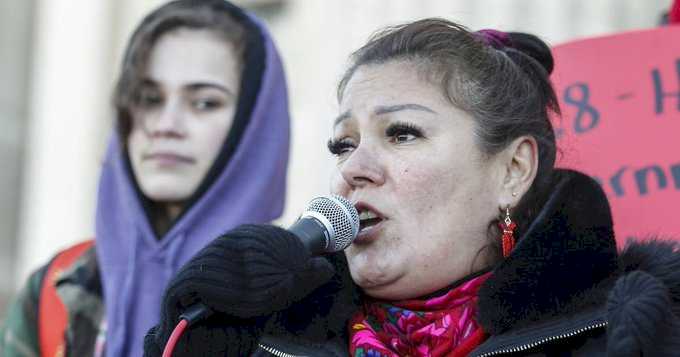#Canada’s crime gap with the U.S. narrows - an expert says policy, policing may explain why.
A new Statistics Canada report comparing crime trends in Canada and the U.S. over the last 25 years reveals that while the U.S. still records higher levels of violent crime and homicide, the gap between the two countries has steadily narrowed.
Published Wednesday, the report highlights opposite trajectories: declining violent crime in the U.S. and modest increases in Canada.
In 2023, Canada’s police-reported violent crime rate stood at 252 incidents per 100,000 people, compared to 334 in the U.S. – a 33 per cent difference. Fifteen years ago, the gap was 77 per cent.
The U.S. saw a 37 per cent drop in violent crime between 1998 and 2023, while Canda experienced a nine per cent rise since 2009, when reporting methods shifted from victim-based to incident-based counts.
The report primarily attributes the rise in Canada to major assaults, which include attempted murders and both level 2 and level 3 assaults. Level 2 covers assault with a deadly weapon or causing bodily harm assaults, while level 3 is also known as aggravated assault.
In 2023, level 2 assaults accounted for 94 per cent of all major incidents and occurred 1.6 times more frequently than a decade earlier.
But according to criminologist Laura Huey, these changes aren’t happening in isolation, but reflect the impact of public policy decisions and policing trends over the past decade.
“You can see that some of the changes in violent crime map onto public policy by the federal government and provincial governments, for that matter,” Huey said.
Although a few regions made modest changes, Huey noted that most have worked to maintain tight budgets, embracing the view that policing costs are too high. She adds that, as a result, police staffing levels have largely remained stagnant or even declined across much of the country.
At the same time, she cchanges to Canada’s bail system have made it easier for accused individuals to be released pretrial. These combined factors have created, in her words, “a space in which it’s easier to work (in Canada) as a criminal.”
Meanwhile, the U.S. major assault rate has fallen by nearly 27 per cent since the late 1990s. Robbery rates have also dropped steeply in the U.S. — 60 per cent since 1998 — helping close the historical crime gap.
In Canada, there were 23,561 robberies reported in Canada in 2023, representing a rate of 59 incidents per 100,000 population. Over the 25-year period, robbery rates in Canada have fallen down 46 per cent from 1998 to 2023.
Firearms continue to mark a key distinction. In 2023, 36 per cent of robberies in the U.S. involved a gun, compared to 13 per cent in Canada.
Property crime reversal
For the first time in decades, Canada’s property crime rate now slightly exceeds that of the U.S. In 2023, Canada recorded 1,995 incidents per 100,000 people, compared with 1,906 in the U.S.
Both countries have seen dramatic declines in break-ins, thefts and vehicle thefts since the early 2000s, but the pace of reduction has been steeper south of the border
Break-and-enter incidents have been down 183 per cent in the U.S. and 62 per cent down in Canda since 2011.
As for motor vehicle theft, it has sharply declined in both nations, with StatCan suggesting that Canada’s drop is tied partly to mandatory electronic immobilizers in new vehicles after 2007.
Non-vehicle related theft, has been down 44 per cent in Canada and 51 per cent down in the U.S. since 1998.
Despite the improvements, Canadian theft rates in 2023 stood at 1,373 incidents per 100,000 people and now slightly surpass those in the U.S. — 1,340 per 100,000. Roughly a quarter of these involve shoplifting — 28 per cent in Canada and 26 per cent in the U.S.
Homicides remain a stark divide
The most persistent difference between the two countries lies in homicide rates.
In 2023, the U.S. recorded 5.7 homicides per 100,000 people, triplling Canada’s rate of 1.9 per 100,000. The ratio has remained relatively stable for 25 years.
In Canada, Huey argues that organized crime networks — particularly those tied to auto theft, drug trafficking and human trafficking — have taken advantage of what she calls “good operating conditions.”
“Look at the rise of car theft rings in Canada,” she said. “It’s a business, and when the operating condition for illegal businesses is good, they’re going to take advantage of that.”
Firearms account for most of the discrepancy. In 2023, 76 per cent of the U.S. homicides involved a gun, compared with 38 per cent in Canada. When firearm homicides are excluded, the two countries’ rates are nearly identical: 1.24 per 100,000 in the U.S. versus 1.18 in Canada.
Handguns are the most common weapon type in both countries, representing more than half of all firearm-related killings – 57 per cent in Canada and 53 per cent in the U.S.
Demographic patterns were also similar: men made up about three-quarters of victims, while younger people under 40 were disproportionately affected with 59 per cent in Canada and 66 per cent in the U.S.
Limitations
The report notes that crime comparisons between the two countries are inherently complex due to differences in data collection. Canada’s Uniform Crime Reporting system tracks over 100 offence types while the U.S. system tracks around 50.
Changes in the U.S. data reporting in 2021 created temporary gaps in comparability, leading Statistics Canada to exclude that year from long-term trend analysis.
Yvon Dandurand, professor emeritus of criminology from the University of the Fraser Valley, told CTVNews.ca in an interview that the StatCan comparison report is not helpful.
“I would not make too much of this statistical comparison other than the general idea that Canada is not facing the same crime problem as its neighbour to the south,” he said in an email.
“The comparison is really like comparing apples to oranges because there exist significant differences in the statistical police data collected in the two countries,” he added.
According to Dandurand, the data points to crimes reported to the police while there exists cultural, social and demographics differences influence victims’ reporting behaviour, including confidence in the police.
Huey says she sees it differently.
“I’ve never seen a piece of research that shows victim reporting is different between #Canada and the U.S.,” she said. ”If anything, you would expect to see underreporting in both cases.”
















Canada News Today on Umojja.com